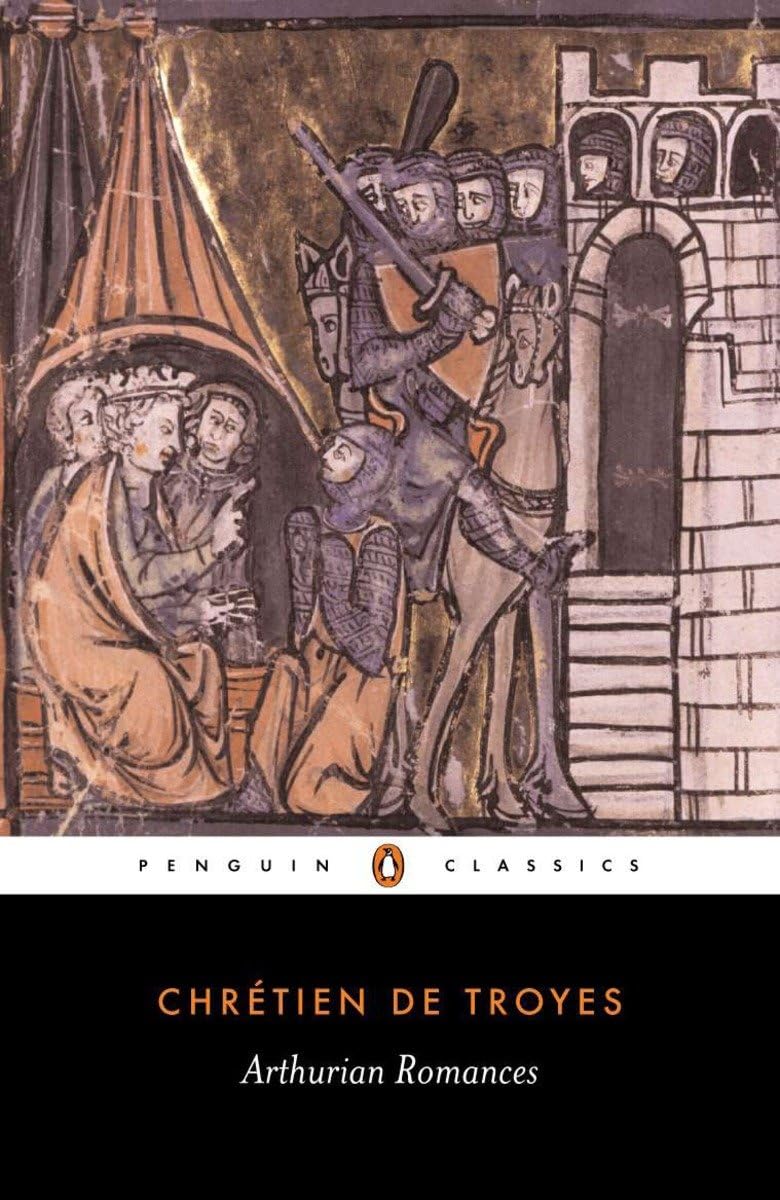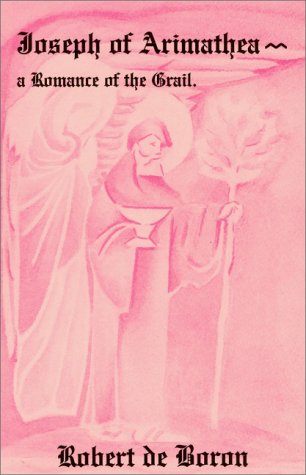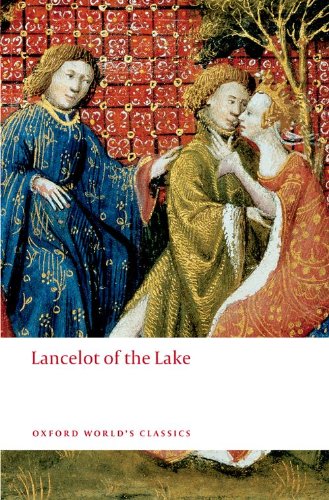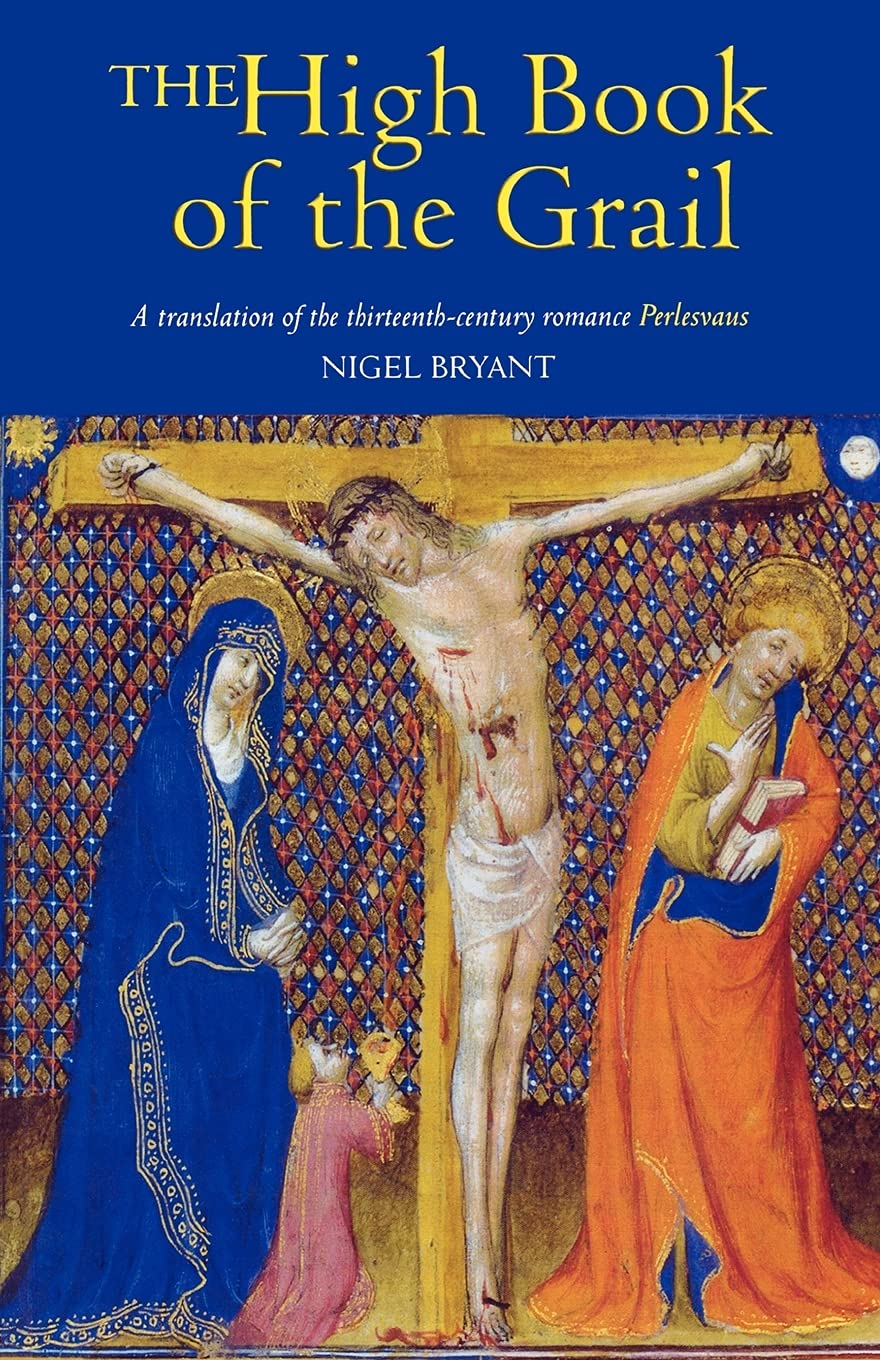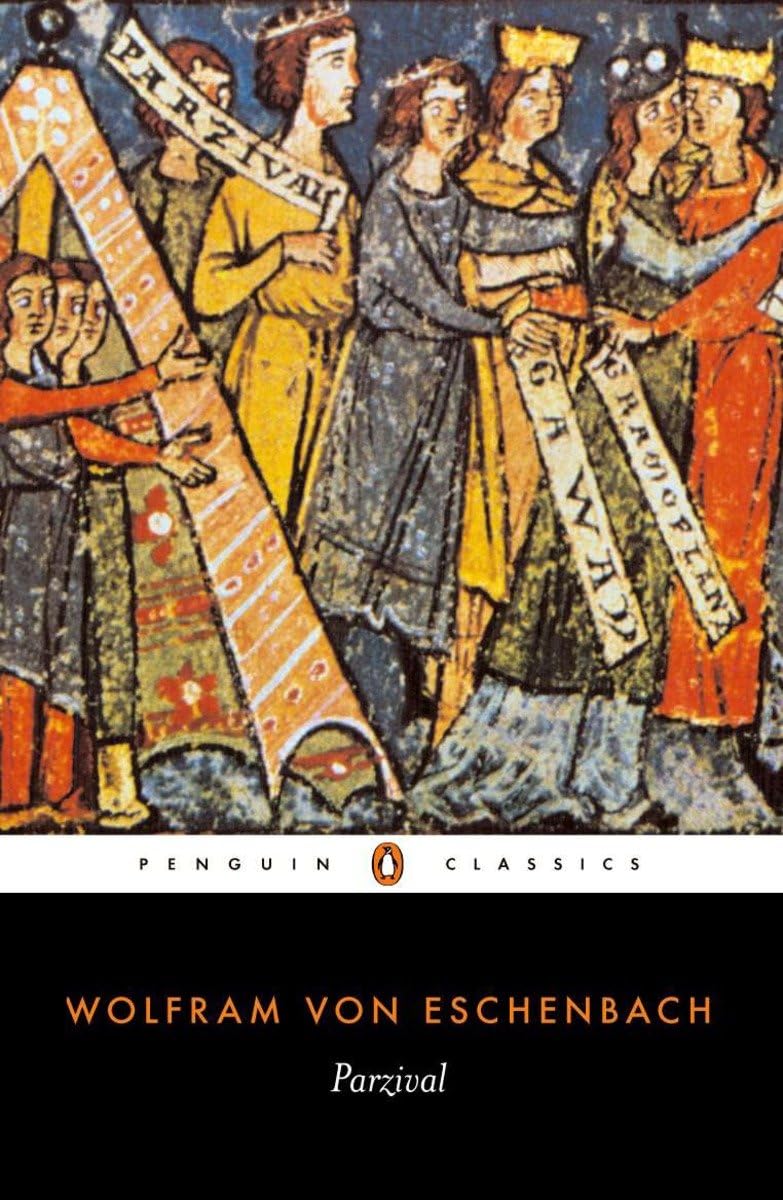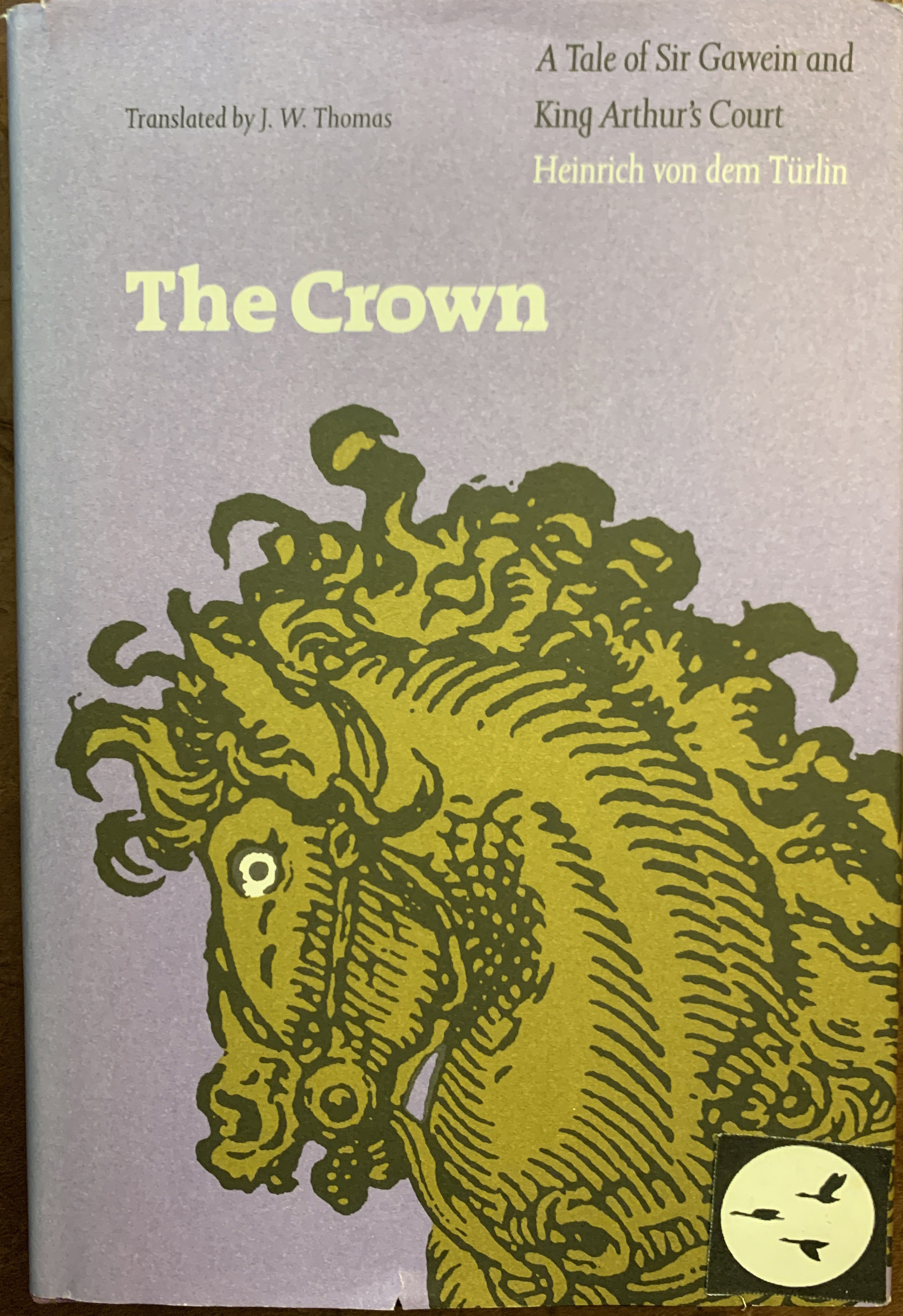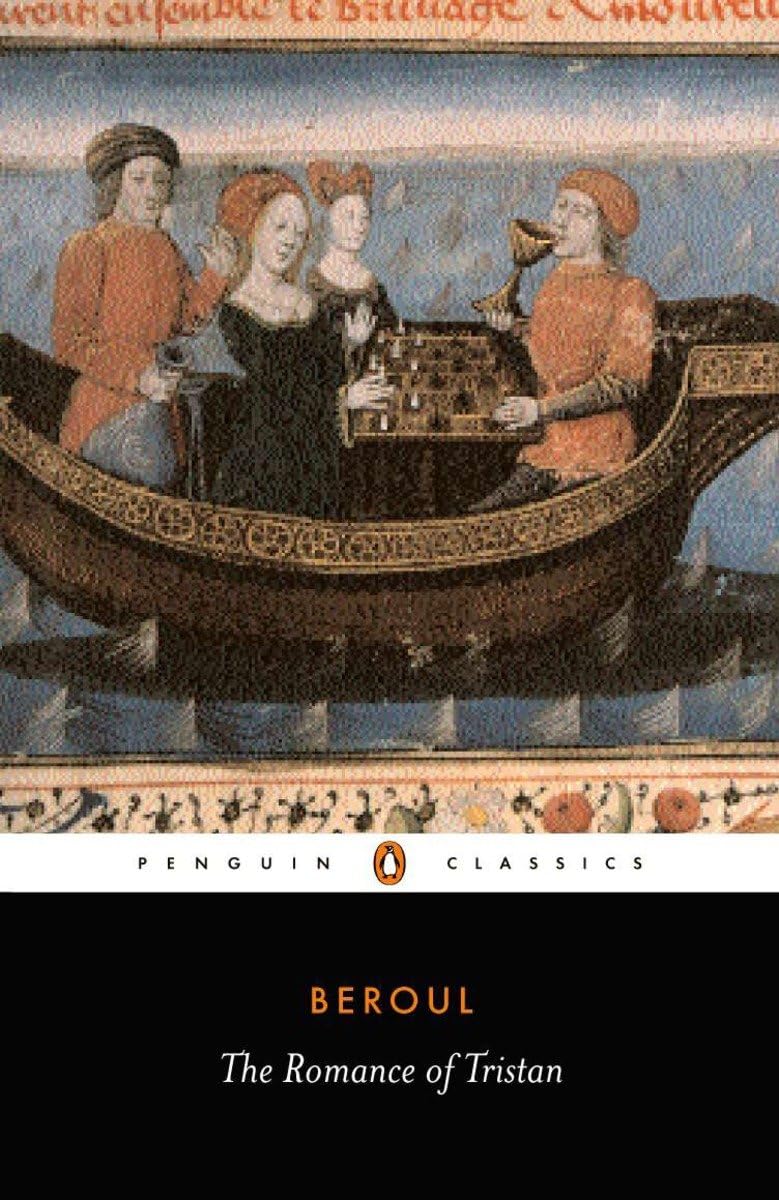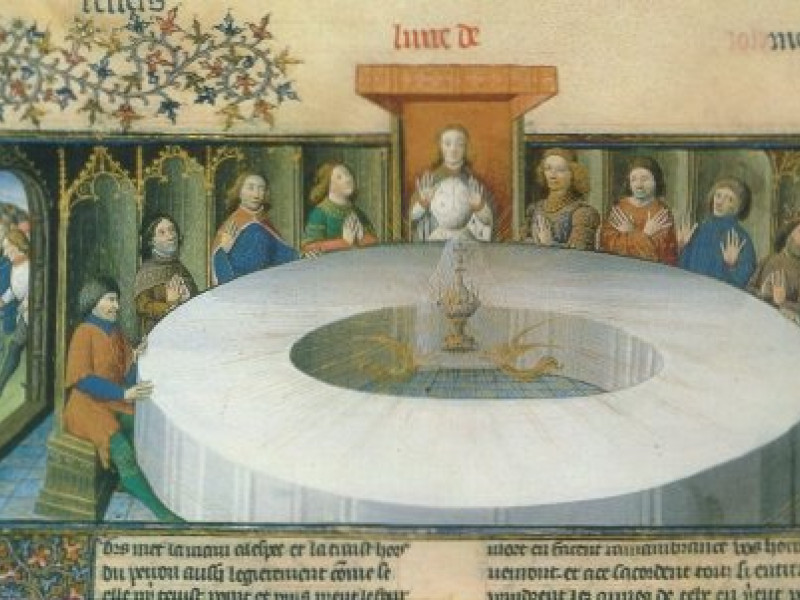Arthurian and Grail Sources
There are hundreds of works on the Arthurian legends in many different languages such as Welsh, English, French, German, Spanish, Italian, Dutch and Scandinavian (and maybe in some more languages that I have not come across). The main sources in Timeless Myths are in French. Others that I have read are in English, Welsh and German.
Note that I have only read a fraction of these materials. There are so many titles that it is quite mind-boggling. I do have the more important works, but not all of them.
The main difficulties are finding English translations and money to buy these books. I can only spend money on what's available and what's affordable. Another problem is location. I live in Melbourne, so it not easy finding translations here. Even in the library, there are limitations. (Of course, there are books that can be found on the Internet, and they can deliver it to your door. Only one problem with that.... I don't have a credit card.)
It should be noted that I have a separate bibliography page for the Songs of Deeds section, which contains the Frankish legends of Charlemagne. So if you wish to look at the texts available about Charlemagne, Roland, and Guillame of Orange, then go to the Frankish sources page.
Texts
The following books are translations that I have read. If you are interested in reading Arthurian literature, then I would highly recommend that you read these books. These books are the main sources of information for the Arthurian legends on Timeless Myths.
Most of these books are actually books I have brought over the years. A few books listed here come from books I have either borrowed or read in the library.
Geoffrey of Monmouth
The History of the Kings of Britain
translated by Lewis Thorpe
Penguin Classics, 1966
Highly Recommended
(Also called Historia regum Britanniae or History. This was written in Latin, in 1137. See the Life of King Arthur.)
Vita Merlini
translated by Basil Clarke
Cardiff: UWP, 1973
http://www.geocities.com/branwaedd/merlini.html
(This translation in electronic format and edited by Mary F.E.K. Jones, was extracted from the book titled The Life of Merlin, translated by Basil Clark. It is the only translation that I could get my hands on. The html format came from the website http://www.geocities.com/branwaedd/merlini.html.)
Wace and Layamon
The Life of King Arthur
translated by Judith Weiss & Rosamund Allen,
Everyman, 1997
Highly Recommended
Wace was an Anglo-Norman who wrote the Roman de Brut in French, probably in 1155. Layamon was an English writer who wrote the Brut in 1200. See the Life of King Arthur.
Wace adapted Geoffrey's Historia, adding some new details to it, such as the Fellowship of the Round Table. Layamon adapted his work from Geoffrey and Wace, providing a more magical aspect for the legend.
Chrétien de Troyes
Arthurian Romances
translated by William W. Kibler & Carleton W. Carroll
Penguin Classics, 1991
Highly Recommended
Containing all five medieval romances by Chretien de Troyes (fl. 1175):
Cliges
The Knight of the Lion (Le Chevalier au lion or Yvain)
The Knight of the Cart (Le Chevalier à la charrette or Lancelot)
Story of the Grail (Conte du Graal or Perceval)
Unfortunately, Chrétien never completed the Grail story.
In the appendix, Kibler added a summary of several Grail/Perceval Continuations (4 of them). It is quite useful to compare these continuations with other Grail romances, eg. Didot Perceval, Peredur, etc.
Marie de France
The Lais of Marie de France
by Judith P. Shoaf
http://www.english.ufl.edu/exemplaria/intro.html
Marie de France was a French poet who flourished in the 12th century. Marie wrote a number of lais or short narrative songs. There is no medieval literature in Brittany that has survived, but she claimed that she had faithfully translated her sources from Breton singers. The most interesting lais (to us at least) were titled Lanval about Arthur's unfaithful queen, and Chevrefoil ("Honeysuckle") about Tristan and Isolde. This one book is available at the bookshop. I haven't bought it yet, but you should be able to find the translation (by Judith P. Shoaf) from the webpage mentioned above.
Robert de Boron
Joseph of Arimathea: A Romance of the Grail
translated by Jeans Rogers
Rudolf Steiner Press, 1971
The French poet named Robert de Boron, who flourished around 1200, wrote a trilogy about the Grail in verse.
Joseph d'Arimathie
Merlin
Perceval
Joseph of Arimathea is a rather slim book, with only 60 pages.
Since his Merlin survived only in fragments, I could not find an English translation so far. There is a prose version, known as the Prose or Vulgate Merlin. As for the tale titled Perceval, this work is lost, though we can probably rely on the Didot Perceval, which was written around 1210, to give us an idea of what might have been in it.
Unknown
The Romance of Perceval in Prose: a translation of the 'E' manuscript of the Didot Perceval.
translated by D. Skools
University of Washington Press, 1961.
Highly Recommended
Phew! Long title for a small book. It is generally called Didot Perceval or Prose Perceval. Another book found in the State Library.
Lancelot-Grail Cycle (Vulgate Cycle)
Lancelot-Grail: The Old French Arthurian Vulgate and Post-Vulgate in Translation (5 volumes)
edited by Norris J. Lacy
Garland Publishing.
Highly Recommended
The Lancelot-Grail cycle, also called the Vulgate Cycle, was written by several French writers between 1225-1237. There are five volumes in this edition, and this includes the Vulgate Cycle:
the History of the Grail (Estoire de Saint Graal)
the Story of Merlin (Vulgate Merlin or Prose Merlin)
the Quest of the Holy Grail (Queste del Saint Graal)
the Death of King Arthur (Mort le Roi Artu or Mort Artu)
The Post-Vulgate cycle, which was written in 1240 or later, contains the following tales:
Merlin Continuation (Suite du Merlin)
The Quest of the Holy Grail
Death of King Arthur
The Post-Vulgate version of the Quest still has Galahad, Perceval and Bors as the Grail knights, but it has incorporated the heroes Tristan and Palemedes into the Quest as well. The Death of King Arthur in the Post-Vulgate version is a very short narrative compared to the Vulgate version.
The Vulgate Version of the Arthurian Romances (8 volumes)
translated by H. Oskar Sommer
Carnegie Institution of Washington, 1916
This was found in the State Library. There are eight volumes. The last volume is an index. Most of the text was written in French, with some summaries in English written beside the text; this was not a full translation. Sommer's version includes the works found in Lacy's version, except the Post-Vulgate tale – Merlin Continuation.
The Quest of the Holy Grail
translated by P. M. Matarasso,
Penguin Classics, 1969
Highly Recommended
This was translated from the Queste del Saint Graal of the Vulgate Cycle. This was the first Arthurian text that I read.
The Death of King Arthur
translated by James Cable,
Penguin Classics, 1971
Highly Recommended
This was translated from the Mort le Roi Artu of the Vulgate Cycle.
Unknown
Lancelot of the Lake
translated by Corin Corley & Elspeth Kennedy,
World's Classics, 1989
Highly Recommended
This is the pre-cyclic work (pre-Vulgate) of Lancelot of the Lake, translated from Old French. This doesn't contain the full work. The rest can be found in Elspeth Kennedy's larger work.
Unknown
The High Book of the Grail
translated by Nigel Bryant
D. S. Brewer, 1978
Highly Recommended
I finally found this book on the early 13th century Old French Perlesvaus or Le Haut Livre du Graal. This is a new translation compared to the previous translation by Evans that I listed below.
The High History of the Grail
translated by Sebastian Evans (1898)
Online Medieval and Classical Library (OMACL), 1996
Also known as the Perlesvaus or Le Haut Livre du Graal, it is a very large work. I have not read this, though I do have a copy of this from (OMACL). I will read this.... one of these days.
Wolfram von Eschenbach
Parzival
translated by A. T. Hatto
Penguin Classics, 1980
Highly Recommended
Parzival was the German version of Perceval. The story is quite different. When I get the chance, I may read this one day.
Sir Thomas Malory
Le Morte d'Arthur (2 volumes)
translated by Janet Cowen,
Penguin Classics, 1969
Highly Recommended
Sir Thomas Malory tried to tie all of the Arthurian tales together in a single work called Le Morte d'Arthur, written in 1469. This edition comes from the Caxton printed manuscript, retaining the Middle English style; therefore it was not easy to read. Note that "Caxton" referred to the printing publisher. This large work comes in two volumes.
Le Morte d'Arthur: The Winchester Manuscript
translated by Helen Cooper,
Oxford World's Classics, 1998
Highly Recommended
This recent edition was based on the Winchester Manuscript. Unlike my copy of the Caxton edition, this edition has a great index and notes. I favoured Winchester's version because it was a lot easier to read. However, I noticed that some parts were omitted so it's best to have the two versions available.
Unknown
The Death of King Arthur: Morte Arthure and Le Morte Arthur
translated by Brian Stone
Penguin Classics.
Two Middle English romances on the death of Arthur (with two unknown authors) can be found in this book.
The alliterative Morte Arthure was written about 1400, and it followed along the same plot as that of Geoffrey of Monmouth's work, because Lancelot's role is small and it also emphasised the betrayal of Mordred as causing the fall of Arthur's kingdom.
The stanzaic Le Morte Arthur was written about 1350, and was more like the Vulgate's Mort Artu, where the love of Lancelot and Guinevere was part of the causes of the downfall of Arthur. Malory used these two works as his sources, along with the French romances.
Unknown
Sir Gawain and the Green Knight
translated by Brian Stone
Penguin Classics, 1959
Highly Recommended
A 14th century Middle English romance of Gawain's adventure in Sir Gawain and the Green Knight.
Unknown
Three Arthurian Romances: Poems from Medieval France
translated by Ross G. Arthur.
Everyman, 1996.
This book contains three Arthurian tales: "Caradoc", "The Knight with the Sword" and "The Perilous Graveyard".
Unknown
The Rise of Gawain, Nephew of Arthur
translated by Mildred Leake Day
Garland Publishers, 1984
Titled De ortu Waluuanii, nepotis Artur in Latin (c. 1250). This story was attributed to Robert de Torigni. It expanded what Geoffrey of Monmouth had briefly mentioned in his Historia, where Gawain was brought up in a Roman court, received his arms and knighthood from the Roman Emperor (Geoffrey said Pope) before Gawain became Arthur's knight. This book was found in the State Library.
Heinrich von dem Türlin
The Crown: A Tale of Gawain and King Arthur's Court
translated by J. W. Thomas
University of Nebraska Press, 1989
Yet another Grail romance. It was called Diu Krône (Crown) and written in German, around the early 13th century. This story has Gawain as the hero.
Beroul
The Romance of Tristan
translated by Alan S. Fedrick
Penguin Classics, 1970
Highly Recommended
This early version of Tristan, written in the mid-twelfth century, was fragmented.
Thomas
Tristan in Brittany
translated by Dorothy Leigh Sayers
Ernest Benn Ltd, 1929
Highly Recommended
Another romance on Tristan, written in late twelfth century, also survived only in fragmented form. This book was found in the State Library.
Gottfried von Stassburg
Tristan
translated by A. T. Hatto
Penguin Classics, 1970
Highly Recommended
German version of the poem on Tristan and Isolde. Gottfried's version was also fragmented; the last few episodes are lost. So to supplement the missing episodes, the translator included Thomas' Tristan in his book.
Unknown
The Romance of Tristan
translated by Renee L. Curtis
World's Classics, 1989
Highly Recommended
This version of Tristan's romance was commonly known as the Prose Tristan, and it was written in French about 1240-50. The Prose Tristan became part of the Post-Vulgate romances. The Prose Tristan was the most complete story of Tristan and Isolde (the other early versions are fragmented or lost), but it was less pure to the original story. The Prose Tristan was the version that the most medieval scholars preferred.
However, this translation left out a great deal of Tristan's adventures in Logres, Arthur's kingdom, mainly because the original manuscript is quite large. Which is a little disappointing.
Aneirin
Y Gododdin : Britain's oldest heroic poem
edited and translated by A.O.H. Jarman
Llandysul, Gomer, c 1988
This may be the oldest reference to Arthur in literature. It has just one line about Arthur, about him being a great warrior.
Unknown
The Black Book of Carmarthen
edited by J. G. Evans
Translated from a 13th century manuscript called Black Book of Carmarthen. Another book found in the State Library. It contains a collection of Welsh poems dating between the 9th and 11th centuries, including some poems about Arthur and Myrddin (Merlin).
The Black Book of Carmarthen
No names of translators were given here.
http://www.geocities.com/branwaedd/bbcindex.html
Some of the poems found in the Black Book of Carmarthen, can be found on this website.
Unknown
The Mabinogion
translated by Jeffrey Gantz
Penguin Classics, 1976
Highly Recommended
This is my main source for the Welsh myths. The Mabinogion (c. 1400) is comprised of a collection of 11 Welsh tales. The Mabinogion has five Arthurian tales, including Culhwch and Olwen and the three Welsh romances. See the Mabinogion page.
The Mabinogion
translated by Lady Charlotte Guest
introduction and illustration by Alan Lee
HarperCollins Publishers, 2000
Highly Recommended
Here is an early English translation by Lady Charlotte Guest. This version has five Independent Tales (the other translation only had four), which include the story of Taliesin. In this edition of Charlotte's translation, the book contains many beautiful illustrations of Alan Lee, who was the prolific artist of the Celtic myths and Arthurian legends. This book was borrowed from my local library.
Guest's translation can also be found in Legends of Camelot.
Gildas
Works
translated by Giles, J. A.
Medieval Source Book
Also titled De excidio et conquestu Britanniae ("The Overthrow and Conquest of Britain"), written c AD 590.
This is an electronic text version from the Medieval Source Book. I only read the relevant sections.
Bede
Ecclesiastical History of the English People
translated by Leo Sherley-Price and D. H. Farmer.
Penguin Classics, 1955
Also, titled Historia ecclesiastica gentis Anglorum, in AD 732. This book contains a few lines about the battle of Mons Badon, mentioning Ambrosius Aurelianus, not Arthur. I did not buy this book, but I did read relevant chapters (15 & 16) while I was in the bookshop.
There is also an electronic copy of this from the Medieval Sourcebook, possibly translated by L.C. Jane, divided into several books.
Nennius
Historia Brittonum
edited by J. A. Giles (1848)
Medieval Source Book
Highly Recommended
This was written by Nennius in the 8th century. It has the story of Arthur, Vortigern, Ambrosius (Merlin), Hengist and Horset that influenced Geoffrey of Monmouth's work. This work is an electronic text from the Medieval Source Book)
Unknown
The Annales Cambriae
translated by James Ingram
(from the book called The Anglo-Saxon Chronicle)
From the Internet Medieval Source Book
The Annales Cambriae or the Annals of Wales just list briefly chronicles events in Wales and Britain. The years of interest to us are between AD 516 and 580.
Unknown
The Welsh Triads
From Celtic Twilight (Legends of Camelot)
http://camelot.celtic-twilight.com/triads/index.htm
Site compiled by Gordd Cymru
The Welsh Triads or the Trioedd Ynys Prydein was composed over various dates, and can be found in four different manuscripts: Peniarth Manuscript, the White Book of Rhyderrch, the Red Book of Hergest, and also the Black Book of Caermarthon. I have read this from a website called Celtic Twilight (Legends of Camelot). I am not sure who is the translator, but I have listed his website above.
Unknown
The Anglo-Saxon Chronicle\
translated by Rev. James Ingram (London, 1823),
with additional translation of Dr. J.A. Giles
http://anglosaxon.celtic-twilight.com/asc/index.htm
Site compiled by Gordd Cymru
The Anglo-Saxon Chronicle was composed through several centuries by various authors. Of interest is Part 1 (5th-7th century AD), and to a lesser extent Part 2 (2nd half of 7th century AD).
Caradoc of Llangarfan
The Life of Gildas
translated by Hugh Williams
Internet Medieval Sourcebook
This biography (composed between c. 1130 and 1150) on St Gildas said that he was a contemporary of the semi-historical Arthur; however Gildas never mentioned Arthur in his own work. What is interesting is the part concerning Melvas, who abducted and ravished Gwenhwyfar, Arthur's wife, and the war between the two kings. This is another text that can be found in the Medieval Sourcebook.
William of Malmesbury
Chronicle of the Kings of England
translated by Rev. John Sharpe (1815),
edited by J.A. Giles
Celtic Twilight
Arthur was only mentioned in Book I of the Chronicle, where they found the sepulcher of Walwin (Gawain), in Ros, Wales. There is also more on Vortigern and Hengist, though this is very brief too. I found this at the website called Celtic Twilight. This translation was excerpted from the Chronicle of the Kings of England.
Other Texts
The following works are translations that I have not yet read, but I do suggest that you give these a try.... Well, if you can find them.
There are several reasons why I haven't read these works yet.
There is no English translation available yet.
The original is either fragmented or damaged, and probably not yet published.
It's out of publication (OUT OF PRINT).
I couldn't afford it (please, donate?).
It was available but I did not want to buy it.
However, if you do happen to find English translations of any of these works (preferably in paperback) that are affordable, please e-mail me the details (title, author, name of the translator, ISBN, and the publisher, etc).
Ulrich von Zatzikhoven
Lanzelet (c. 1194)
A German tale of Lancelot. So far, I haven't found any translation on this book.
Hartmann von Aue
Erec (1190)
Iwein (1202)
Two works based on Chretien's romances. The romance Erec has the same title as that of its French counterpart, while Iwein is the German version of Yvain or the Knight of the Lion. I could not find these two works anywhere in Australia.
Eilhart von Oberg
Tristrant und Isalde
Yet another German version of the romance of Tristan and Isolde. This version was written in the late 12th century, so it was the earliest German version, which was more similar to that of Beroul's version than to Thomas. However, this version is now lost, but it is similar to the 15th century prose version, written by Hans Sachs. Eilhart was responsible for bringing epic tales of courtly love to the German audiences.
Wirnt von Grafenberg
Wigalois: The Knight of the Fortune's Wheel
translated by J. W. Thomas
I haven't been able to find this book.
Raoul de Houdene?
The Vengeance of Raguidel (or La Vengeance Raguidel)
I haven't been able to find this book. This was possibly written by Raoul de Houdene.
Jocelyn, a monk of Furness
The Life of Kentigern
translated by Cynthia Whiddon Green
Internet Medieval Sourcebook
Kentigern, also known as Mungo, was a saint in Strathclyde, Scotland, and died in 604. Kentigern would be a contemporary of Urien Rheged and King Rhydderch, and according to tradition was the king's son and related to Arthur and Lot, through Lot's daughter, Thenaw, Kentigern's mother. Kentigern was also said to have baptised Myrddin (Merlin). I have not read this biography, but this can be found on the Medieval Sourcebook.
Gerald of Wales
The Journey Through Wales / Description of Wales
translated by Lewis Thorpe
Penguin Classics, 1978.
Gerald or Giraldus Cambrensis (1146-1223) recorded that Arthur and Guinevere were buried at Glastonbury. Glastonbury was thought to be the Isle of Avalon. At that time, Glastonbury was an island in the middle of marshland.
Modern Works
The following works are modern treatments of the Arthurian legends. I have not read any of these (except The Mist of Avalon), because I wanted to stick with medieval works on Timeless Myths. These works are considered to be classics in their own right, and therefore I have decided to list them here, just in case you want to read them:
Alfred Tennyson
Idylls of the King (1859)
Edwin Arlington Robinson
Merlin (1917)
Lancelot (1920)
Tristram (1927)
T.H. White
The Once and Future King (1958)
Marion Zimmer Bradley
The Mist of Avalon (1982)
References
The following books I have read and used for my researches and general reference. These works also include dictionaries, encyclopedias, critical essays or analyses on myths, etc.
Some of these books provide history and background to the myths and legends.
King Arthur in Legend and History
edited by Richard White
J M Dent, 1997
This is an anthology of various Arthurian texts. Although this does not contain whole translations, it is still useful to read the various extracts. There are too many works that have been quoted to list here.
Holy Bible (Good News Version)
United Bible Societies, 1976
I used this for mainly finding references of the cup used in the Last Supper and Joseph of Arimathea.
By Jimmy Joe

